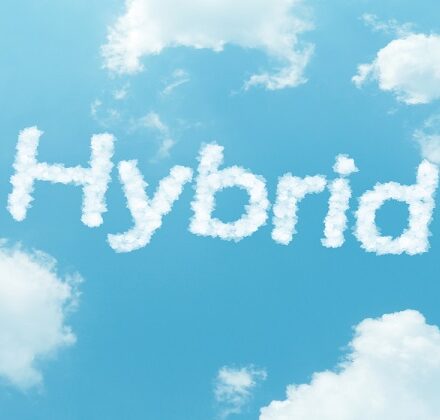Late last year I read a great article from Wikibon called “True” Private Cloud will begin shipping to the market in 2016. I really liked how their definition of private cloud matched up with the capabilities and structure of our own Enterprise Hybrid Cloud. As I sit here on this long flight from New Jersey to Las Vegas for VMworld 2016, I decided to revisit that article and see how well it’s stood up in 2016 and if our Enterprise Hybrid Cloud really meets their definition of True Private Cloud. And, more importantly, talk about why it’s important to have hybrid as part of your cloud strategy.
Comparing True Private Cloud to Enterprise Hybrid Cloud
To start off, let’s look at how Wikibon defines True Private Cloud and how it compares to Enterprise Hybrid Cloud.
Converged infrastructure
“Built with a foundation of converged (or hyperconverged) infrastructure, that can be highly automated and managed as logical pools of compute, network and storage resources.”
Since the release of Enterprise Hybrid Cloud in 2014, our company has supported converged solutions like Vblock and VxBlock as the platform of choice. We’ve also supported a “bring your own” model where a customer can choose their own hardware and, provided it meets the requirements, our services team helps the customer convert it to Enterprise Hybrid Cloud.
Despite that, the vast majority of our customers have gone down the route of converged infrastructure. Why? Customers get it. They know that converged infrastructure is the fastest path to success, simplifying the architecture while providing a powerful and supported combination of industry leading technologies.
Self-service
“Enables end users (developers, line-of-business, etc.) to have self-service access to resource pools and have visibility to internal costs or IT chargeback pricing.”
It’s true: you can provide powerful hardware to run your cloud. But the truth is, if IT consumers can’t easily get access to your cloud solution, they’re going to find love in the arms of another cloud. A true private/hybrid cloud needs to provide that same self-service provisioning and cost visibility that public clouds provide.
The Enterprise Hybrid Cloud leverages the power of VMware’s vRealize Suite to provide powerful self-service capabilities and cost visibility back to the business. That suite of software gives them a powerful self-service catalog and orchestration engine, a tool to monitor performance in the environment, and cost visibility for the resources consumed. Combined with the extensive engineering that went into creating Enterprise Hybrid Cloud and it provides customers with a very functional cloud solution.
One-stop shopping for support
“A single point of purchase, support, maintenance, and upgrade for a pre-tested and fully maintained complete solution (a single throat to choke).”
As a technologist it’s often easy to get caught up in the “speeds and feeds” of a cloud solution. While that may be technically interesting, the thing that CIOs care about is driving business value from IT. Creating a cloud from scratch is a daunting task for customers and the fact that Enterprise Hybrid Cloud has been created with thousands of hours of engineering effort makes it a very compelling solution. Customers know when they unwrap their Enterprise Hybrid Cloud it’s not an “assembly required” platform. They know it’ll be delivered quickly and be ready to go “out of the box,” quickly driving business value right away instead of months in the future. Again, customers get it.
There are other pieces of Wikibon’s definition of True Private Cloud that I encourage you to read, but you might be wondering why I’m talking about Enterprise Hybrid Cloud in the context of private cloud. Maybe I’m hopeful next year Wikibon will change their definition to True Hybrid Cloud?
The key to a successful hybrid cloud implementation
The fact is customers need to adopt a solution that has both private cloud capabilities and public cloud capabilities. The key to making the hybrid model successful is to use a platform that provides hybrid functionality along with private. If IT tells its developers to go to one tool for on-premises and another tool for off-premises it’s likely to end badly.
Most developers or end users don’t care where their workload is provisioned. They care about things like performance characteristics, capabilities, and cost (to name a few). Making all of this visible for both public and private clouds all from the same interface allows the consumer of cloud resources to make the decision based on the needs of the business and not the limitations of the technology. We know customers want this, and we listen to our customers.
Enterprise Hybrid Cloud supports “out of the box” integration with public cloud provides like VMware vCloud Air and Amazon Web Services. In the future we’ll see even more public clouds supported, providing customers with the choices they need to enable them to make the decisions that are right for their business.
In closing, I think the Wikibon article does a great job of defining not only private cloud but also hybrid cloud. And I’m also happy to see that Enterprise Hybrid Cloud “checks the boxes” of private cloud while also providing hybrid capabilities that our customers are asking for.


